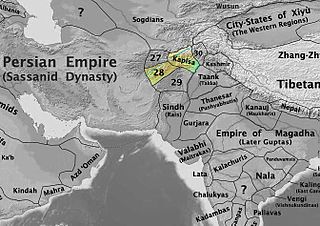 W
WThe Huns were a nomadic people who lived in Central Asia, the Caucasus, and Eastern Europe between the 4th and 6th century AD. According to European tradition, they were first reported living east of the Volga River, in an area that was part of Scythia at the time; the Huns' arrival is associated with the migration westward of an Iranian people, the Alans. By 370 AD, the Huns had arrived on the Volga, and by 430 the Huns had established a vast, if short-lived, dominion in Europe, conquering the Goths and many other Germanic peoples living outside of Roman borders, and causing many others to flee into Roman territory. The Huns, especially under their King Attila, made frequent and devastating raids into the Eastern Roman Empire. In 451, the Huns invaded the Western Roman province of Gaul, where they fought a combined army of Romans and Visigoths at the Battle of the Catalaunian Fields, and in 452 they invaded Italy. After Attila's death in 453, the Huns ceased to be a major threat to Rome and lost much of their empire following the Battle of Nedao (454?). Descendants of the Huns, or successors with similar names, are recorded by neighbouring populations to the south, east, and west as having occupied parts of Eastern Europe and Central Asia from about the 4th to 6th centuries. Variants of the Hun name are recorded in the Caucasus until the early 8th century.
 W
WThe Alchon Huns, also known as the Alchono, Alxon, Alkhon, Alkhan, Alakhana and Walxon, were a nomadic people who established states in Central Asia and South Asia during the 4th and 6th centuries CE. They were first mentioned as being located in Paropamisus, and later expanded south-east, into the Punjab and central India, as far as Eran and Kausambi. The Alchon invasion of the Indian subcontinent eradicated the Kidarite Huns who had preceded them by about a century, and contributed to the fall of the Gupta Empire, in a sense bringing an end to Classical India.
 W
WThe Hephthalites, sometimes called the White Huns, were a people who lived in Central Asia during the 5th to 8th centuries. They existed as an empire and were militarily important between 450 to 560. They were based in Bactria and expanded east to the Tarim Basin, west to Sogdia and south through Afghanistan, but they never went beyond the Hindu-Kush, which was occupied by the Alchon Huns. They were a tribal confederation and included both nomadic and settled urban communities. They were part of the four major states known collectively as Xyon (Xionites) or Huna, being preceded by the Kidarites, and the Alkhon, and succeeded by the Nezak Huns and the First Turkic Khaganate. All of these Hunnic peoples have often been linked to the Huns who invaded Eastern Europe during the same period, and/or have been referred to as "Huns", but there is no consensus among scholars about such a connection.
 W
WHlöðskviða or The Battle of the Goths and Huns is an epic poem found in Hervarar saga ok Heiðreks.
 W
WThe term Iranian Huns is sometimes used for a group of different tribes that lived in Afghanistan and neighboring areas between the fourth and seventh centuries and expanded into northwest India. They are roughly equivalent to the Hunas. They also threatened the northeast borders of Sasanian Persia and forced the Shahs to lead many ill-documented campaigns against them.
 W
WThe Kidarites, or Kidara Huns, were a dynasty that ruled Bactria and adjoining parts of Central Asia and South Asia in the 4th and 5th centuries CE. The Kidarites belonged to a complex of peoples known collectively in India as the Huna, and in Europe as the Chionites, and may even be considered as identical to the Chionites. The 5th century Byzantine historian Priscus called them Kidarites Huns, or "Huns who are Kidarites". The Huna/ Xionite tribes are often linked, albeit controversially, to the Huns who invaded Eastern Europe during a similar period. They are entirely different from the Hephthalites, who replaced them about a century later.
 W
WOtto John Maenchen-Helfen was an Austrian academic, sinologist, historian, author, and traveler.
 W
WThe Nezak Huns were one of the four groups of Huna people in the area of the Hindu Kush. The Nezak kings, with their characteristic gold bull's-head crown, ruled from Ghazni and Kapisa. While their history is obscured, the Nezak's left significant coinage documenting their polity's prosperity. They are called Nezak because of the inscriptions on their coins, which often bear the mention "Nezak Shah". They were the last of the four major "Hunic" states known collectively as Xionites or "Hunas", their predecessors being, in chronological order, the Kidarites, the Hephthalites, and the Alchon.
 W
WFlavius Odoacer, also spelled Odovacer or Odovacar, was a soldier and statesman of barbarian background, who deposed the child emperor Romulus Augustulus and became King of Italy (476–493). Odoacer's deposition of Romulus Augustulus is traditionally seen as marking the end of the Western Roman Empire as well as Ancient Rome.
 W
WXionites, Chionites, or Chionitae are Romanisations of the ethnonym of a nomadic people who were prominent in Transoxania and Bactria.